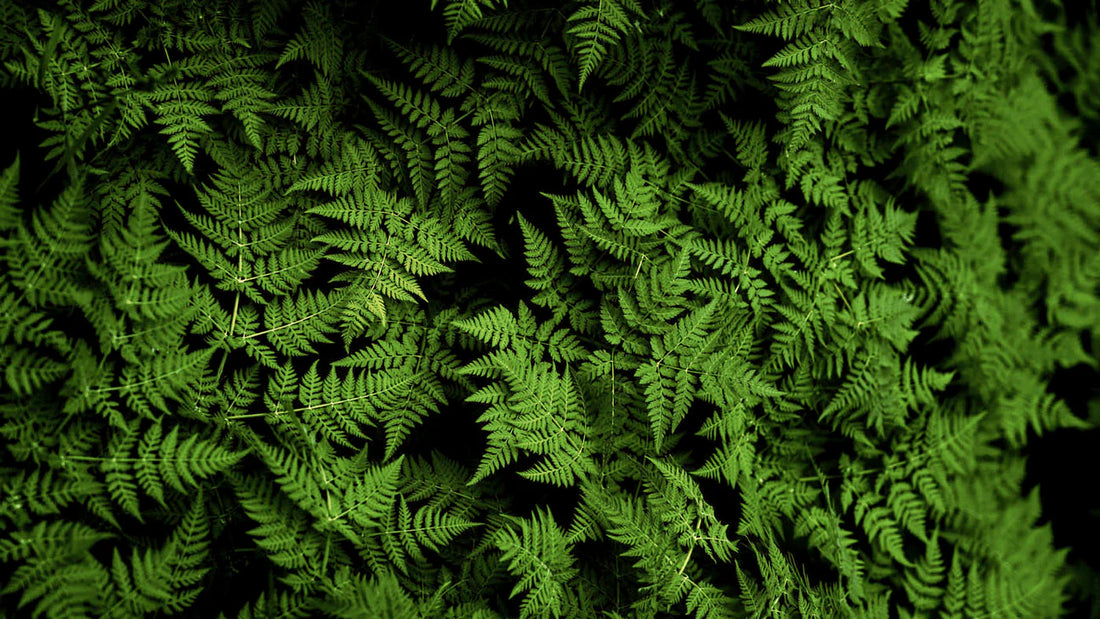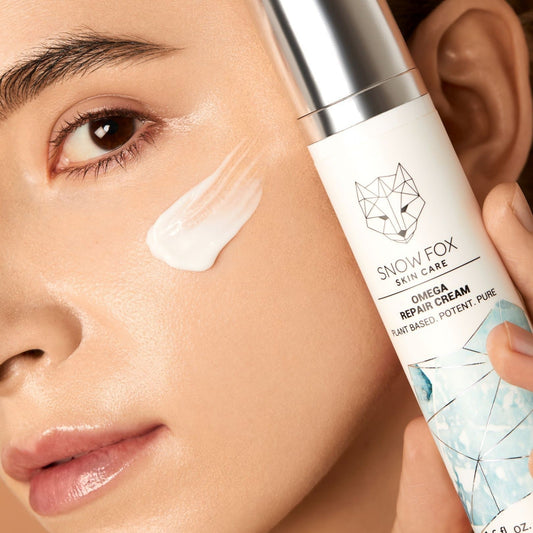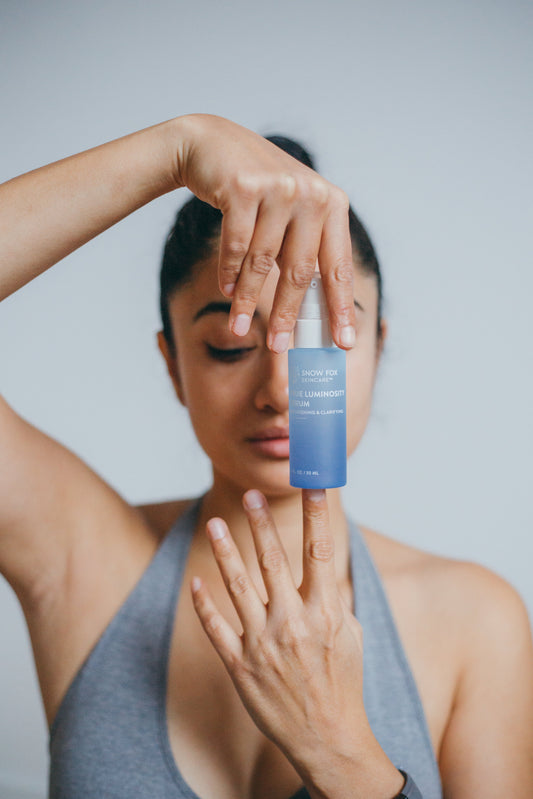A Definitive Guide to Eco-conscious Packaging
The beauty industry creates 120 billion units of packaging every year. This packaging is one of the worst contributors for plastic waste pollution overall. As an exercise, simply consider the amount of skincare and makeup you personally own and how much of these jars, tubes, containers, pouches are made from non-recyclable items or contain plastic glitters.
Safety vs Environmental Needs
It is also true that beauty and skincare products require robust packaging to withstand environmental degradation and more importantly, keeping the product contamination-free and safe to use on the skin. These are all key concerns especially for “Clean” formula brands, if there are no strong synthetic preservatives inside the formulas. Ultimately, safety is priority when it comes to consumer products.
At Snow Fox Skincare, we’ve experimented and tested different packaging in order to find that delicate balance of keeping our products fresh without the use of preservatives while looking towards eco-conscious solutions. We opted to use airless vacuum pumps to dispense our serums, cleanser and cream to ensure our product remains effective through minimizing oxidation and air-born contamination. This extends the shelf-life and freshness of organic, natural ingredients while makes sure you get every last bit of product.
"Beauty and Skincare products require robust packaging to withstand environmental degradation and more importantly, keeping the product contamination-free and safe and on skin."
Despite our best intentions, it seems that convenience and practicality still matters to most consumers. To highlight this point, a recent study shows that although 75% of America’s waste is recyclable, only around 30% of it is recycled. 9 out of 10 people say that they would recycle if it is “easier”.
It is also interesting to note that only 50% of UK’s households recycle their bathroom waste while almost 90% of kitchen waste are recycled. This goes to show that when composting is accessible and the packaging instructions are clear, it is much easier to recycle.
Source: Eunomia
Direct Consequences to The Environment
We all know that we must take responsibility for our actions that have direct consequences to the environment. Our oceans and wildlife are choking on plastic pollutants, our land is suffering from the toxic run-offs from landfills and unsustainable deforestation is leading to loss of habitats for animals… the list goes on.
Zero waste economy is a noble and longterm goal, however our production/ consumption supply chains are highly complex and there are a lot of factors to consider. In the meantime, our suggestion is to reduce our carbon footprint meaningfully and sustainably. This means that as a skincare producer, we will do our best to try to make it easier for you to recycle, while making sure your products are safe, effective and easy to use.
Beauty Packaging
Beauty packaging is rarely made with a single material, making it much harder to recycle since it can get confusing which part goes where. These items are often made up of materials that are 100% recyclable on their own but they must be disassembled prior to recycling.
In order to make it easier, we devised this guide to let you know how to recycle.
Plastics
Almost all plastics are recyclable, the question is what type of plastic means what and how to identify them. Most plastic packaging are marked with a symbol and numeric code indicating the plastic type inside the “recycling symbol” – a triangle with chasing arrows that surround a number. This has been the packaging standard since 1988. However, soft plastic such as plastic bags and film made from low and high density polyethylene, expanded polystyrene packing and hard polystyrene casings are generally not accepted by waste collection service providers but do check with your local area requirements.
Generally soft plastics/expanded polystyrene (eg. disposable utensils, cling-film, take-away lids) needs to be compacted and the cost of building large compactors is high therefore usually waste collections do not take these back.
Most PET and HDPE which are commonly used in the beauty industry are recyclable. To take this a step further, sometimes we will use materials such as RPET/PCR-PET (Recycled PET/ Post Consumer Resin PET) that offer second life to the plastic fibers.
Source: Recycling Magazine
1. Polyethylene Terephthalate (PET/PETE)
This is the most used form of plastic and also the easiest to recycle. Most of our Snow Fox Skincare bottles are made completely from this plastic so you can just throw into the correct recycling bin after use. However never expose this type of plastic to heat over 70ºC/158ºF. Upon high heat, repeated washes and uses, it will leech a toxic metalloid called antimony, which can be very harmful to human health.
2. High Density Polyethylene (HDPE)
High density polyethylene is commonly used in cosmetics, beauty and bath products due to its high resistance to solvents, acids and other chemicals. Usually it is quite waxy in texture. However it cannot be used to contain water.
3. Poly Vinyl Chloride (PVC)
Usually used for inflatable items or structural household frameworks, it is not used for food or drink packaging. It comes in two forms, rigid and flexible. Your inflatable pool toy is most likely made from this.
4. Low Density Polyethylene (LDPE)
Low Density Polyethylene is a soft flexible plastic widely used for making clear plastic bags and sheeting. It has a higher resilience than HDPE, which basically means that it can be stretched or deformed more without cracking or ripping.
This is usually used for your takeaway packaging, plastic bags and cling-wrap. Moreover, never use this in the microwave since high temperatures will cause the plastic to release chemicals that are harmful to human health.
5. Polypropylene (PP)
Polypropylene also has good resistance to acids and solvents. Polypropylene is able to withstand higher temperatures than HDPE and so is used for applications where a product must be sterilized or heated. It is commonly used for jar lids and containers which contain dairy products such as butter, as it can withstand the heat given off by products during industrial filling processes.
Note: it degrades when exposed to heat and UV present in sunlight so keep it away from windows for better preservation.
6. Polystyrene (PS)
A very stiff and rigid plastic usually used to make CD cases and display stands, casing for electronics and for your take-away, disposable utensils.
7. Other Plastics (Most of these are rarely recycled)
- Nylon: Tough and durable and used for ladies tights, sports clothing and moving parts in machines
- Polycarbonate: Usually used for making sunglasses, safety glasses, CDs and as synthetic "glass" in greenhouses due to its hard, durable qualities
- Acrylonitrile Butadiene Styrene (ABS) - Another tough plastic with high impact resistance. It is used for making Lego bricks, carrying cases and electrical boxes
- Urea formaldehyde: Commonly used for sockets, plugs, switches and other electrical fittings
- Polytetrafluoroethylene (PTFE): This plastic has a very low friction coefficient, i.e., it is "slippy". It is known by the brand name Teflon as the non-stick coating on cooking utensils. It is also used in tape form for sealing the threads on plumbing joints
- Polymethyl methacrylate (PMMA) or Acrylic: Used as a synthetic fiber in sweaters and as clear sheeting or pipe under the trade names "Perspex", "Plexiglas", "Acrylite" and "Lucite".
- Nitrile rubber: one of the many types of synthetic rubbers. These are used for a variety of products including gloves, o-rings, sealants, fuel lines and water hoses in vehicles, wellingtons and anything which requires a flexible, waterproof material
Glass
Glass needs 4,000 years to break down in nature, however it is one of the few materials (alongside aluminium) that can be endlessly recycled without loss to purity or quality. Moreover it substitute up to 95% of raw material through recycling. However in the US only 33% of glass is recycled compared to Germany and Switzerland that reach 90% recycling rate.
For a consumer, almost 99% of the time we can recycle glass easily. Just a note to clean out the jars by quickly rinsing it to reduce food contamination and keep odors to a minimum. Also, if you have the time, removing labels is extremely helpful. These typically burn off in the process but helps to keep emissions down and keeps the glass as clean as possible for recycling. Moreover, remember to remove all “non-glass” lids before recycling!
Photo: Lacey Williams
Paper
Paper is the most well-known and popular medium to recycle. 77% of most office paper waste can be recycled. The process is pretty simple: the paper is sorted according to grades then it is processed and shredded up in paper mills. The shredded pieces of paper go through a heated chemical process that essentially breaks the paper down into fibers which are then cleaned and re-spun into a new roll of paper for usage.
An interesting fact is that paper is pristine and high grade (like your copy paper), can be recycled up to 7 times! Therefore the grading of the paper is important to know how long the fibers are since each time the paper gets shredded, the fibers become shorter and lower in quality.
To properly recycle paper, it is important to remove as much stains, food residue, tape, paint as possible from the paper/cardboard. Any wet fibers are potentially damaged and cannot be reused by the mill plants so there’s no need to recycle your napkins and soiled food containers. Most plants are equipped to sort out the paperclips and staples but just in case your local ones does not, it is better to err on the safer side and remove those before recycling.
It is generally seen as more difficult to recycle paper that have special coating, however, some modern day mills are able to separate these coatings so those who are extra keen can check with the local authorities. For example, glossy paper, envelopes with windows, post-its and drink containers are all recyclable as modern mills can process the adhesives and coatings.
Photo: Alfonso Navarro
How Snow Fox Skincare is creating sustainable, eco-conscious products and packaging
Snow Fox Skincare takes great care when selecting our suppliers and our vendors to ensure we remain true to our Earth First Policy. We balance the function, aesthetic and recyclability of the material when looking into designing our packaging.
Our packaging use as much “single material medium” bottles and containers as we can to make it simpler for our customers to sort their recycling. Most of the time we use PET as it is the most stable and commonly recycled plastic, however sometimes when we are able to, we will use materials such as RPET (Recycled PET) that offer second life to the old plastic items. We also love using BDP and similar types of biodegradable polymer plastics in our packaging which are compostable plastics to help speed up the break-down time of plastics.
While sheet masks are a one-time-use product, we use less than half of industry standards of aluminium in each of our mask pouches to ensure minimal wastage. The 100% organic cotton sheet masks themselves are completely biodegradable. We are still working on finding a safe, more environmentally friendly option for our pouches.
Presently, we are 100% committed to using sustainably sourced and easily recyclable materials to do our part for the environment while contributing to the greater dialogue of responsible and clean skincare. We are constantly trying to upgrade and improve our packaging so if you have any comments or suggestions we are always happy to hear about them!
Subscribe to our social media channels on Facebook and Instagram and our newsletter to stay tuned in to our new product launches, tips & guides on skin care, beauty and wellness!






